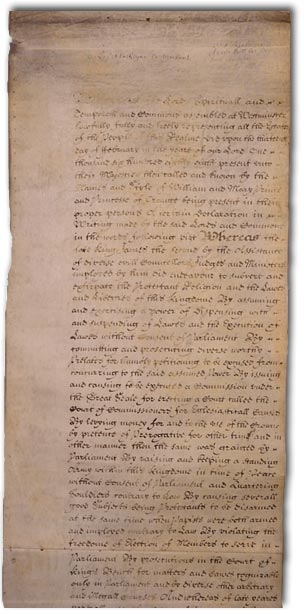The First Amendment constitutes the first 45 words of a larger document known as the Bill of Rights.
The English also have a document called a Bill of Rights, mainly the work of the English Parliament but associated with “The Glorious Revolution” in 1688, when Prince William and Queen Mary succeeded to the throne on the abdication of King James II.
English Bill of Rights from 1689 contains some rights later included in First Amendment
The document, which initially came to be known as the English Bill of Rights of 1689, contains many rights that were later included in the First Amendment, such as the right to petition and freedom of speech and debate (specifically targeted, like the speech and debate clause in the U.S. Constitution, to members of Parliament).
The right to petition may be traced to the Seven Bishops Case in which King James II imprisoned seven bishops who had created a petition to the king saying that a declaration that would remove some laws against Roman Catholics violated laws set by Parliament. The judges ruled in favor of the bishops. The case solidified the opposition to James II.
While the Constitution prohibited test oaths requiring individuals to affirm religious beliefs, and the First Amendment sought to disestablish all national religions, the English Bill of Rights favored Protestants and excluded “Papists” from serving as monarchs or as members of Parliament.
Parliamentary law versus constitutional text
As important as the English Bill of Rights was, it was adopted by the British Parliament, which is sovereign and has the power to repeal it. English law does not operate under a single written document like the U.S. Constitution.
By contrast, the American Founders sought a more secure foundation for First Amendment and other rights by incorporating them within a written Constitution, which is enforceable in courts and cannot be changed by ordinary legislation but through a much more difficult process of constitutional amendment.
John Vile is a professor of political science and dean of the Honors College at Middle Tennessee State University. He is co-editor of the Encyclopedia of the First Amendment.

